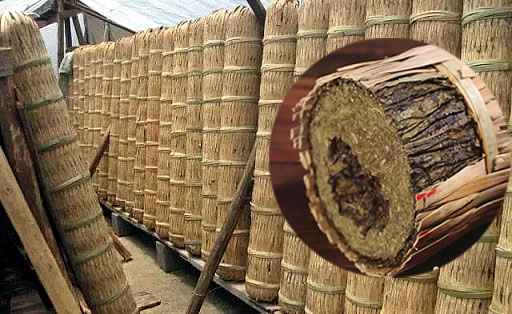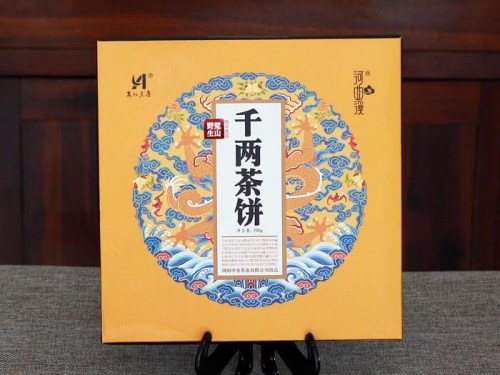- Home
- /
- Tea Shop
- /
- Premium Loose Tea
- /
- Hei Cha
- /
- Qian Liang Cha
Qian Liang Cha
Qian Liang Cha 700g
Qian Liang Cha
 Qian Liang Cha is a specialty of the Anhua area of the Hunan Province of China. The tea was first made into pillars by tightly rolling the Anhua Hei Cha leaves for the convenience of transportation during the Qing-Dao-Guang (清道光 1821~1850年) period. The pillars were standardized to 1.5-1.65 meters long, 0.2 meter in dimension and weight 36kg.
Qian Liang Cha is a specialty of the Anhua area of the Hunan Province of China. The tea was first made into pillars by tightly rolling the Anhua Hei Cha leaves for the convenience of transportation during the Qing-Dao-Guang (清道光 1821~1850年) period. The pillars were standardized to 1.5-1.65 meters long, 0.2 meter in dimension and weight 36kg.
The tea is named after its special heavy weight: 1/ Qian (千 thousand) 2/ Liang (两 Chinese weight unit at about 40g) 3/ Cha (茶 tea)
Like all other post-fermenting teas, Qian Liang Cha develops within its environment through aging and post-fermentation.
A near lost treasure
The last central government controlled and organized production of Qian Liang Cha in Anhua was in the 50's, before the recent resumption of it production. Due to the labor intensity and low yield, the product was phrased out and stopped for 20 plus years.
One of the main manufacturers of the Hunan Hei Cha, Bai-Sha-Xi (白沙溪) realized during the early 80's that if no actions taken, the technics of making Qian Liang Cha would disappear forever with the deaths of the the last generation Qian Liang Cha tea masters. It was then decided to invite the very last tea master Li-Hua-Tang (李华堂) to return to supervise the resumption of the Qian Liang Cha production - the skills and technics have been since carefully documented and listed as a national heritage.
Unique Qian Liang Cha processing techniques
Following are some characteristics of the Qian Liang Cha:
- using all 2ed and 3rd grade Anhua Hei Cha leaves
- It is packaging process is not only unique, but also a crucial part of the tea's processing. The tea leaves are wrapped in special dried plant leaves before being wrapped and gradually tightened in bamboo stirps and meshes.
- Qian Liang Cha's processing is lengthy, high skillful, labor intense and highly environment dependent. For example, after having gone through 3 major stages of preparation and processing, the completed bamboo wrapped pillars are dried in the sun (covered if rains) during the day and left in the open to absorb the drew at night for up to 50 days.
Health benefits of Qian Liang Cha
Similar to most of other tea categories, many health benefits have been reported associated with consuming Qian Liang Cha. Well acknowledged ones include:
- reducing fat absorption and increasing its metabolism in human - known as fat reducing tea
- aid in digestion
- reducing cholesterol levels and blood pressure
- probiotic, beneficial to both kidney and liver


